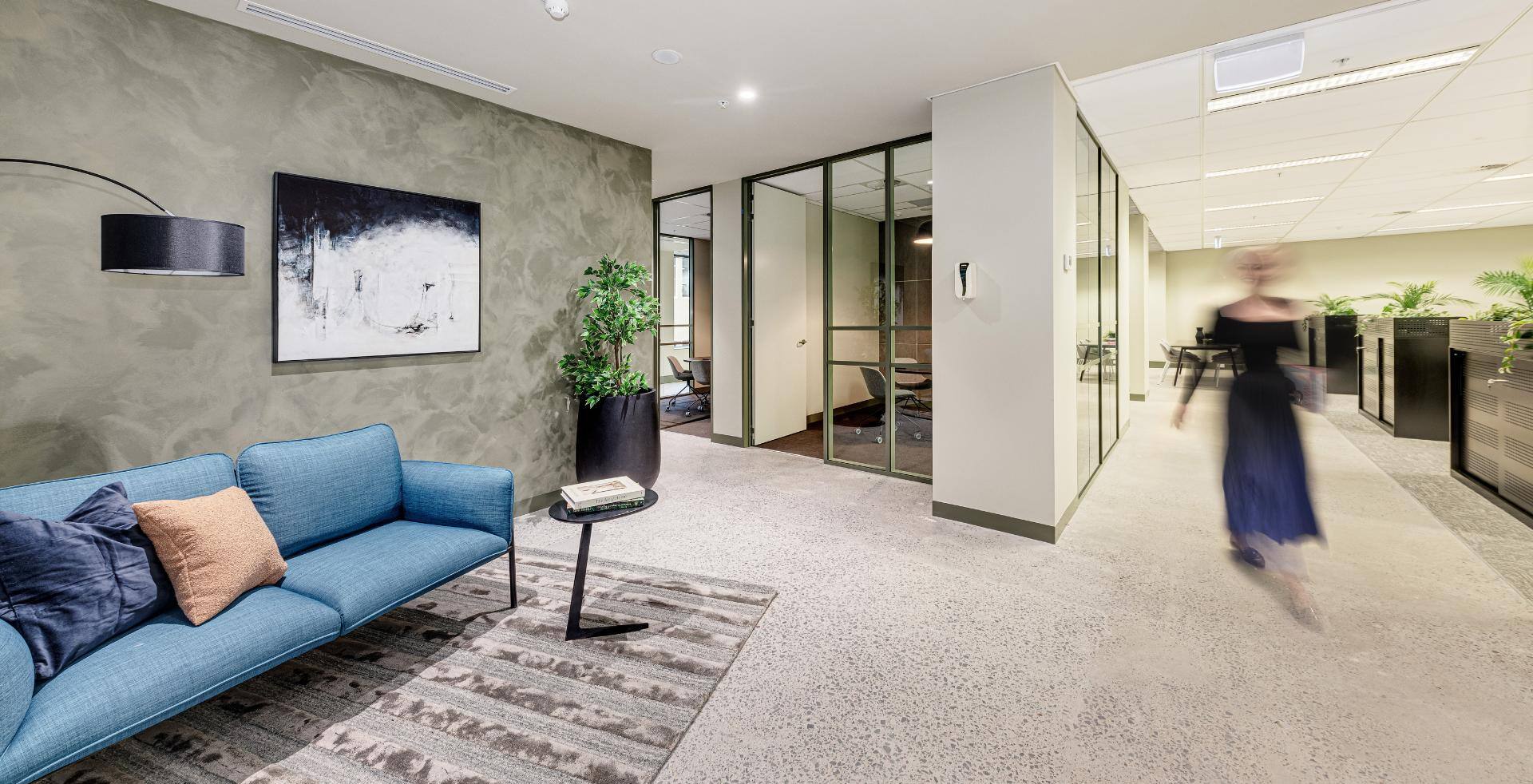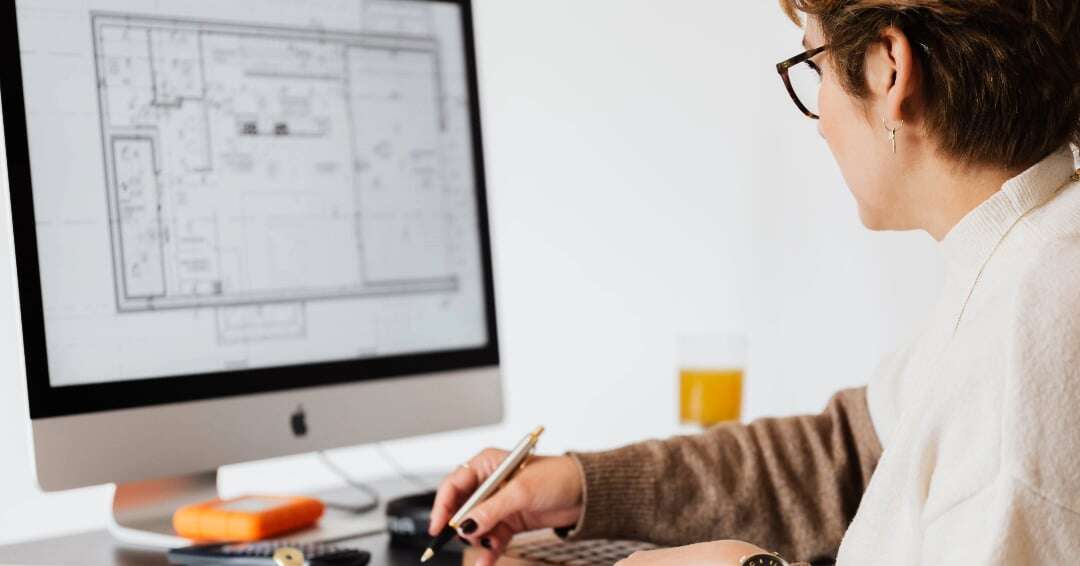The signs that your office is due for a refurbishment are often very clear. Here’s a big one – the office is a ghost town – your staff prefer to work from home rather than make the trek to an unwelcoming space.
Another is that when your people are there, it’s not working for them like it should – instead of giving people a variety of spaces to suit their varying needs throughout the day, they’re stuck with noisy, distracting, uninspiring spaces that impede collaboration and productivity.
Sometimes a refurb is needed if you’re moving into new premises and need the new space refurbished to suit your needs. Or you could be a landlord planning a speculative fitout that needs to fit the bill for a wide range of potential tenants.
Whatever the reason, here's our list of the hottest trends in office refurbs right now.
The top 6 trends to consider for your next office refurbishment
1) 'Resimercial' interior design that makes you feel at home

Ever since the pandemic and the enforced work-from-home regime, people have realised that it’s just, well, more comfortable in a home environment than an office environment. Not rocket science really. Office design has shifted accordingly, with what some people call ‘resimercial’ design becoming the norm in new office fitouts.
Think comfy lounges, private spaces, noise suppression, softer lighting and bathrooms that are more like your own than a military latrine. These spaces are welcoming and enticing, offering a destination worth travelling to.
A good design will also foster creativity and collaboration, encouraging both individual time for thinking and reflecting, as well as meetups in a more casual environment that can foster new ways of thinking and connecting.
Go deeper:
See some recent projects using ‘resimercial’ elements >
Discover how we approach Commercial Interior Design >
2) Hybrid workplaces

The hybrid office is here to stay, so every office refurb needs to take that into account with interior design and technology that enables seamless hybrid working. What does this look like in practice?
First up, a key goal for management is often to encourage staff to come back to the office as much as possible. One of the key benefits of having your people physically present in the office is the quality of collaboration that results. So, having a wide range of spaces that enable different types of collaboration is essential. Just as important is providing quiet, private spaces that facilitate more focused work.
Flexibility is also vital, allowing for different types of working that connect in-office and remote team members. The ability to reconfigure spaces as required is important here.
Most important is the technology to make all this work. From room and desk booking systems to occupancy sensors and inclusive video conferencing technology, it all has to work seamlessly for all your people, all of the time.
Go deeper:
Article: Key factors in designing for hybrid working >
Insight: How to prevent your office from becoming a ghost town >
3) Flexible, activity-based working

This one has been around for a while but it’s not going away any time soon. Gone are the days of cubicles and corner offices. Different work modes require different spaces and Activity Based Working (ABW) provides that. The creation of a flexible workplace is one of the top reasons for undertaking an office refurbishment today.
Typical ABW zones found in today’s office environments include:
- Spaces for focus and individual work; these can include dedicated focus rooms or shared spaces where quiet activities are undertaken.
- Open collaborative spaces to encourage connection and teamwork, often with softer furnishings such as lounges and/or flexible spaces where people can arrange furniture to suit the activity.
- Meeting and project rooms that allow for private meetings or team gatherings, equipped with technology for hybrid meetings and room scheduling.
- Private booths for phone calls, small private meetings or solo work.
- Café areas to foster connection in a less formal environment and provide people with an uplifting space for meals and coffee breaks as well as being a space that enables spontaneous connections.
The benefits of agile working are profound. Firstly it negates one of the main reasons people prefer working at home – it gives them options in the office to work how they want, when they want. Need space? Easily done. Need to connect with someone that’s been ignoring your emails? They're right over there!
Just as importantly it re-connects your people in just the right ways. With a variety of spaces available they can focus together, create together, socialise together as it suits them.
Go deeper:
Article: Office zoning for Activity Based Working >
Insight: What HR leaders need to know about flexible working >
4) Technology enablement

Technology is the key to making the modern office work seamlessly and your refurbishment should consider technology at the outset so it’s integrated harmoniously with both the interior design and the needs of your teams.
Key areas where technology is making a difference in future-forward office refurbs include:
- Hybrid meetings and video conferencing. The latest technology is all about meeting equity – ensuring that everybody, whether in the room or working remotely, can be seen and heard clearly. Advances in both audio and visual technology are rapidly making meeting tech failures a thing of the past; a good technology partner here is vital to ensure you’re set up right from the start and are kept up to date as the technology develops. Room acoustics and lighting also play a key role.
- Audio and visual systems. Make it easy for your people to view what they want and hear what they want. From presenting on the big screen to playing quiet music in a private booth, tech needs to be an enabler, not a barrier. A/V smarts is one more area where the office should offer a clear advantage over working from home.
- Room and desk booking systems. Activity-based working means that access to different spaces needs to be managed, and the right solution will do that reliably with ease-of-use as the primary consideration. Your people will need to be able to move around as required without unnecessary roadblocks, so again, the right tech partner to plan and set this up is essential.
5) Biophilic design

This is all about recognising the human need to feel connected to nature and enabling this by incorporating natural elements throughout the interior design. In office refurbishments this can be done in many ways, such as:
- Maximising natural light and using natural ventilation wherever possible
- Using natural materials, colours, shapes and forms in the design, especially those that connect the built environment to its surroundings
- Maximising views where natural spaces are visible
- Creating links between indoor and outdoor spaces
- Using plants throughout the space
Numerous studies have shown that biophilic office designs increase both feelings of wellbeing and actual productivity – what’s not to like?
6) Sustainability

With the growing importance of ESG (Environmental, Social and Governance) considerations across the corporate sphere, not to mention it being a major concern for most of your staff, sustainability is becoming a leading requirement for office refurbishments.
Some of the key areas that can be considered when planning a sustainable office refurbishment are:
- The use of renewable, recycled and recyclable materials in the fitout, including reclaimed materials, natural fibres, FSC-certified timbers and the like. An added benefit here is the character that these materials often contribute to the interior design.
- Energy efficiency achieved through well-considered lighting, office equipment, insulation, and passive heating & cooling.
- Technology such as smart lighting, room occupancy sensors and building automation systems can contribute hugely to energy efficiency.
- Designing for longevity. Rather than designing for what’s on trend now then ripping it all out and starting again in a few years, a more sustainable office refurbishment can be modular in design, with timeless base finishes that can be easily updated as required.
Go deeper:
Insight: Explore the latest thinking in ESG in modern workplace design >
Wrapping up
Back in the day, an office refurbishment often meant little more than moving things around, updating fixtures and fittings and generally sprucing things up. Today it’s an opportunity to reimagine how your whole company works together and make significant positive changes impacting productivity, wellbeing, retention, sustainability and a whole lot more.
As a result, it can seem a more daunting task than it used to be even just a few years ago. That’s where we can help. As a fully integrated design and fitout company, we cover all the bases from strategy through to interior design, construction, technology integration and even the finance.
We have experts specialising in leadership development for the hybrid era and change management to ensure your team come along for the ride.
Want to learn more? Reach out to connect with one of our team.

/Cap%20Stats/amicus-company-profile-blog.jpg)


-2.png)
-2.png)






/Sectors/Office/contact-amicus.jpg)